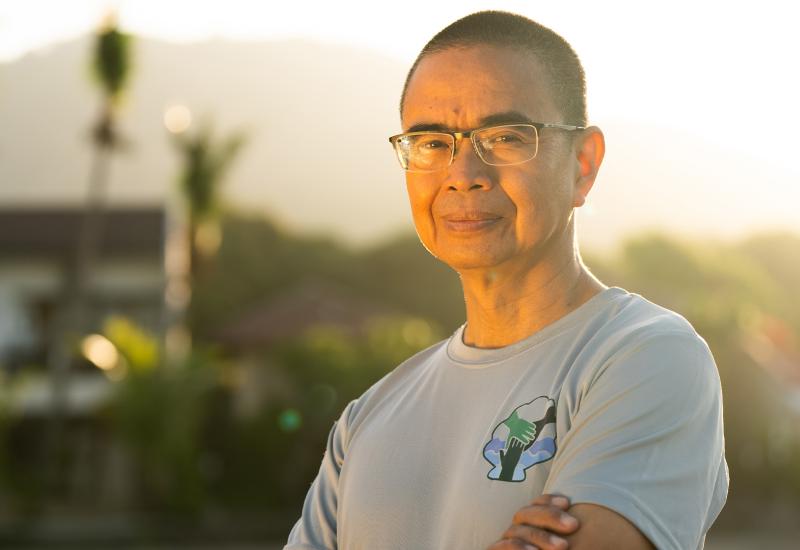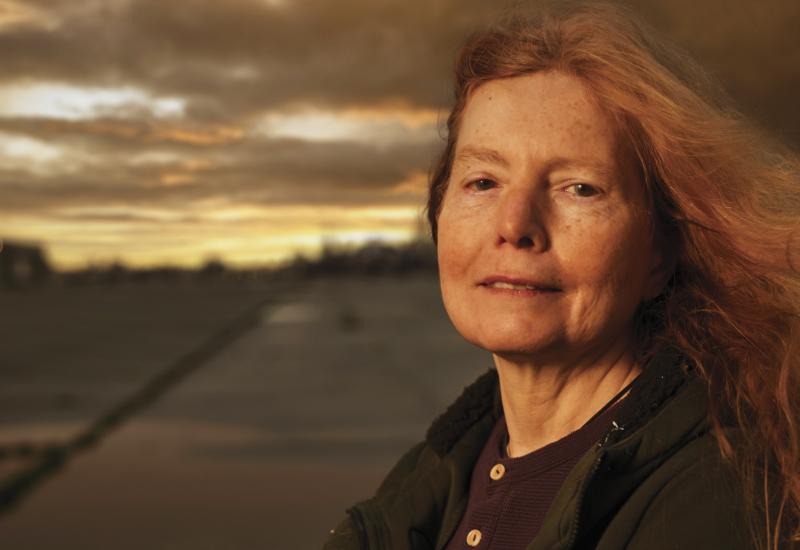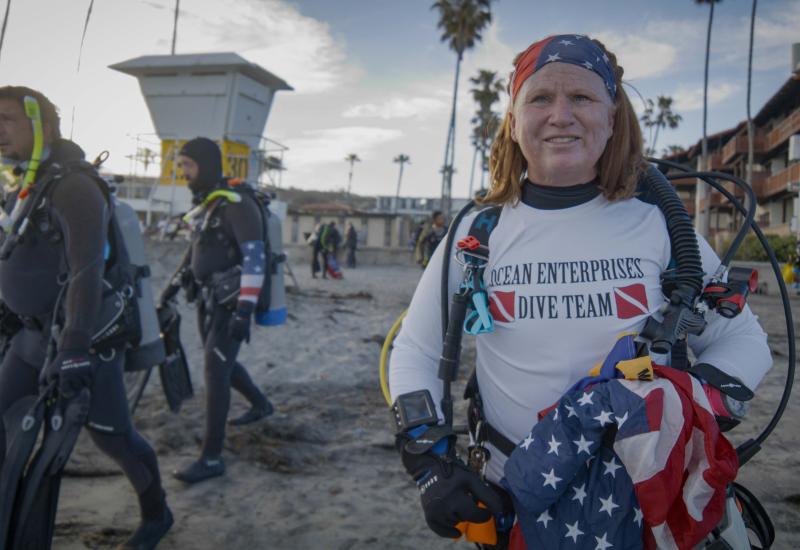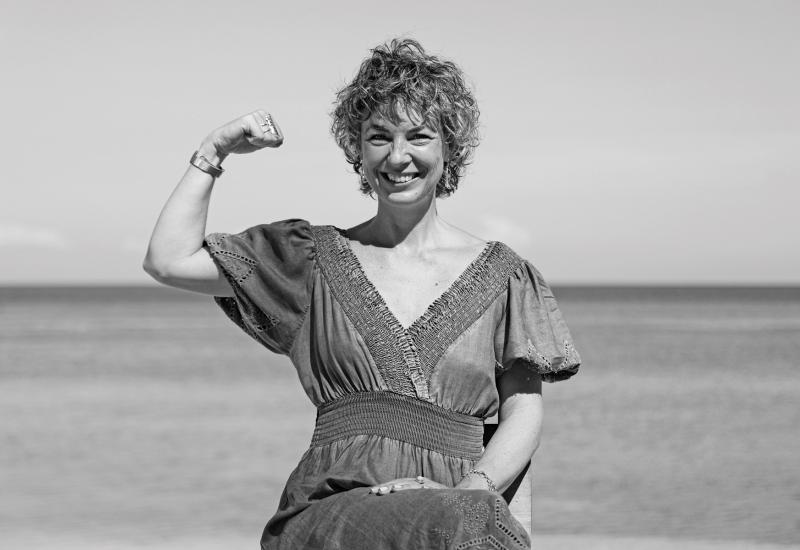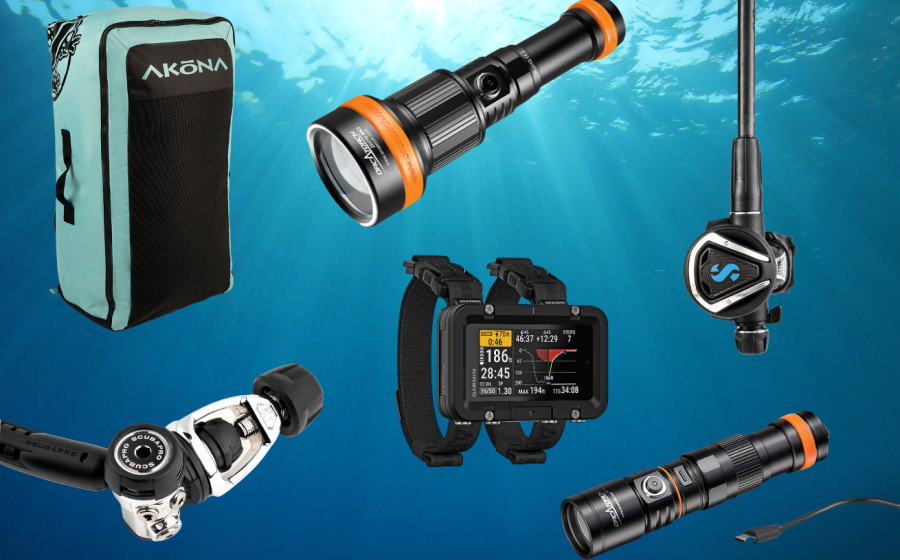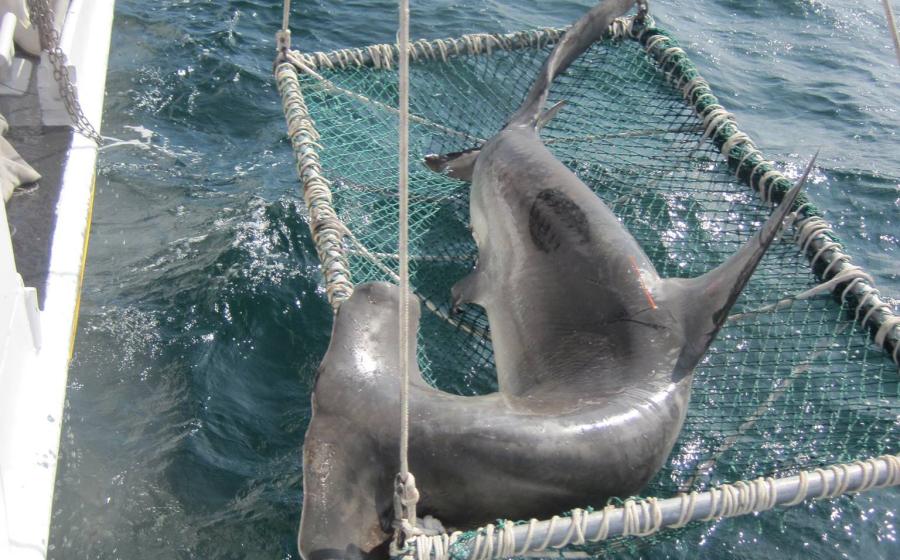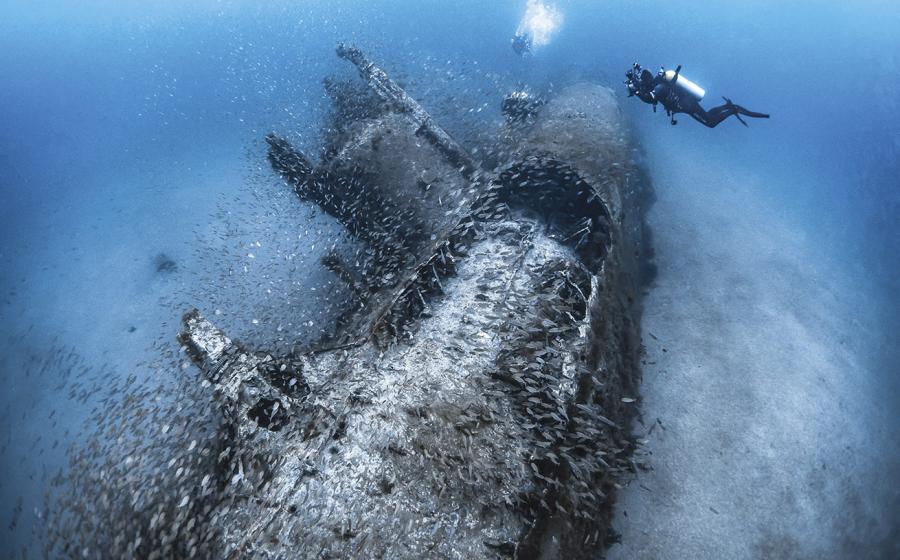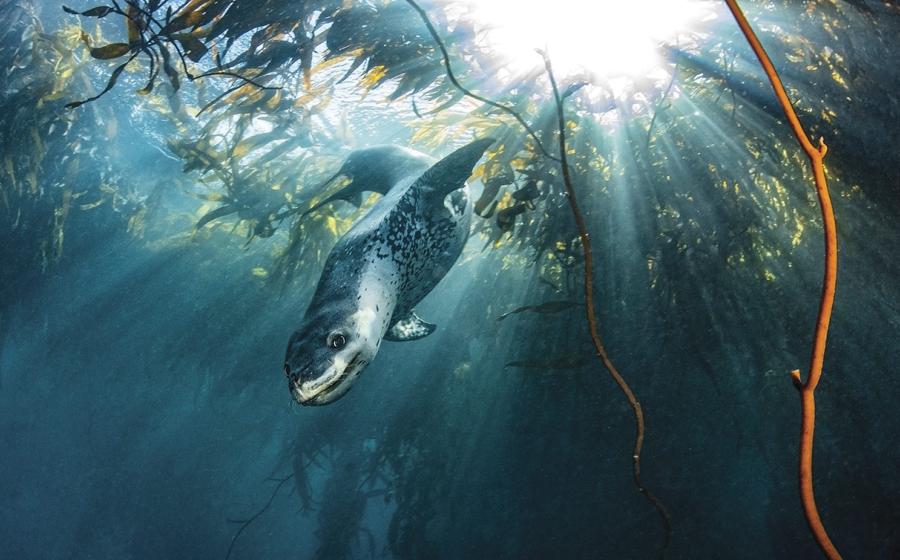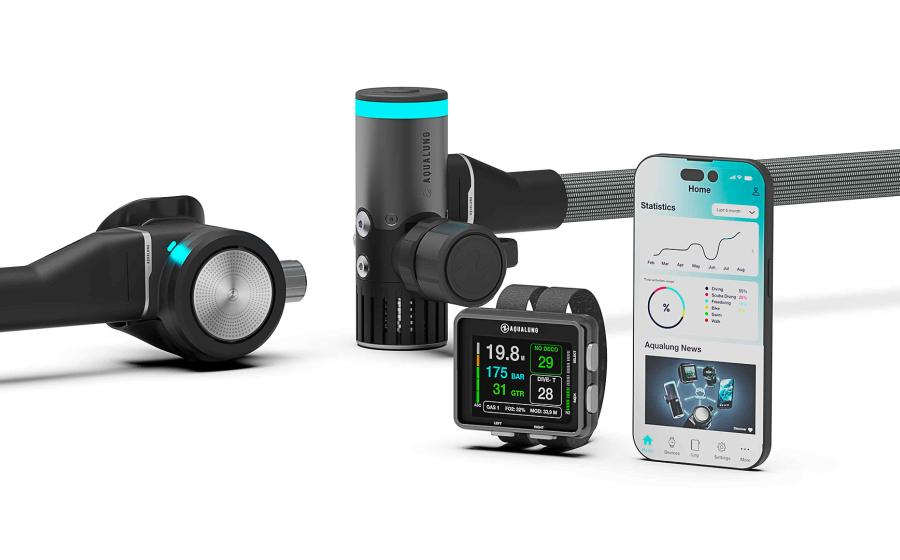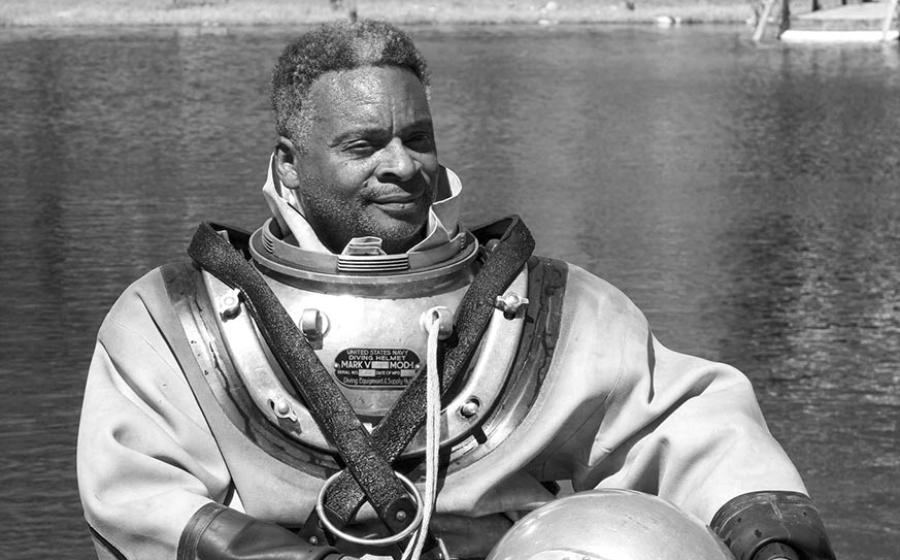Hiroshi "Kuma" Sato Named January Sea Hero for Conservation Work
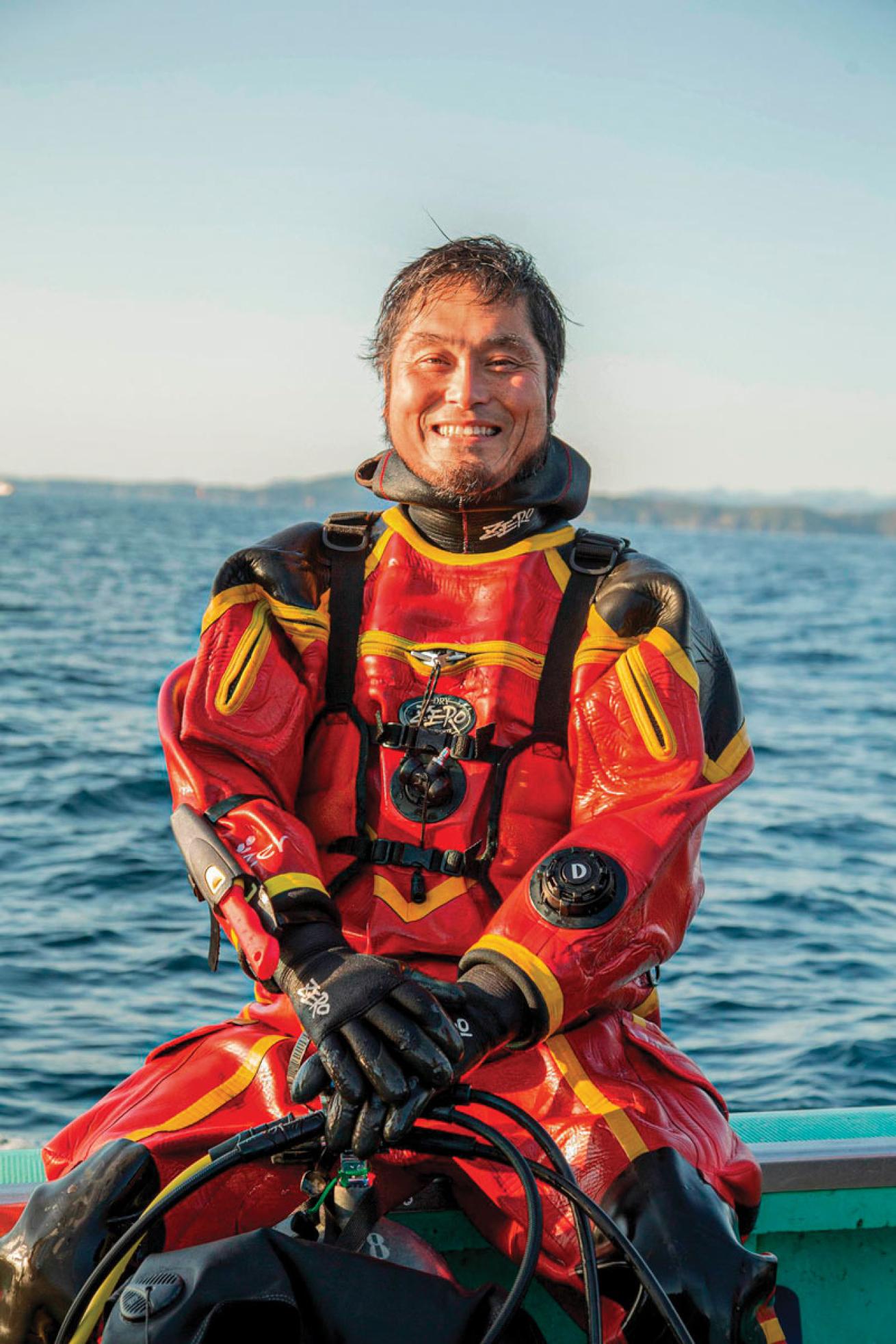
Koh YamaguchiA portrait of Hiroshi Sato.
Year Dive Certified: 2001
Age When Certified: 27
Dive Certification Level: Open Water Scuba Instructor
Instagram: @sanrikuvolunteerdivers
Words to Live By: “There is a saying in Japanese that goes, ‘Constant dripping wears away the stone,’ meaning that even slow dripping raindrops, when dripped constantly over time, will be able to create a hole in a stone, which also means to never give up. I believe in this quote because revitalizing the ocean in my area after the Great East Japan Earthquake has become a lifelong work, and I will not give up.”
The Great East Japan Earthquake caused widespread devastation in Japan’s eastern coastal region in 2011. One diver, Hiroshi Sato, turned the tragedy into a way to give back to his home by shifting his career from dive instructor to nonprofit founder. Sanriku Volunteer Divers spent nearly five years cleaning marine debris after the earthquake, and has since constantly evolved to address the most immediate needs of the region. Along the way to realizing his passion for ocean conservation was no longer a hobby but a way of life, Sato helped remove marine debris, worked on seabed restoration, and educated fishermen to join divers in their efforts. For his perseverance and tireless efforts to always find a way to give back to his local community and the waters of Japan, Hiroshi Sato is our January 2023 Sea Hero.
Q: You turned a tragedy into an opportunity to do good when you returned to Japan after the Great East Japan Earthquake and tsunami. What ultimately led you to found Sanriku Volunteer Divers?
A: In 2011, the earthquake left a heart-breaking impact on my hometown. As soon as I saw the debris-strewn landscape of the sea, the sadness made me decide that I must do something. The ocean was my workplace and my livelihood, so I felt a strong desire to give back to it. That’s why I founded Sanriku Volunteer Divers to help clean up the sea.
Q: Sanriku Volunteer Divers began as away to collect debris after a natural disaster. What is the main focus today?
A:In the beginning, Sanriku VolunteerDivers mainly collected marine debris and trash left behind by the great disaster. For about five years, we removed debris from the ocean every day, but now, 90 percent of our conservation activities are seaweed farming and seabed restoration. We also focus on training local fishermen, fishery staff, city hall administrators and more to become divers.
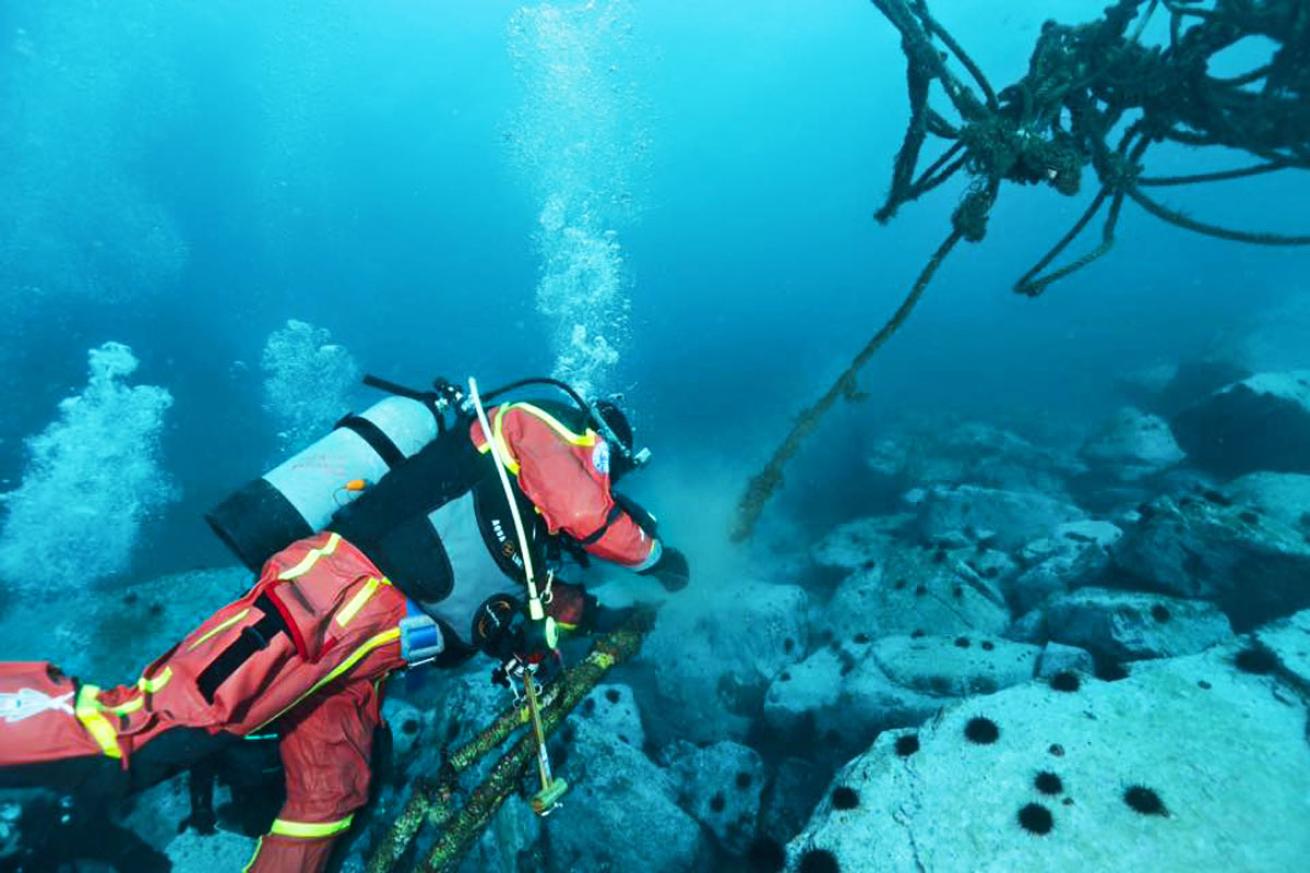
Koh YamaguchiA diver collects marine debris after the tsunami.
Q: You have been involved with kelp plantation and the removal of over-populated sea urchins. Can you tell us about the success you have had with those projects?
A: The tsunami destroyed the seabed in my hometown Ofunato, which was previously filled with lush eelgrass (Zosteramarina). Overpopulation of sea urchin due to the imbalance effect of the sea environment also attributed to the depletion of eelgrass. We took measures to revive the seabed, which included replantation of eelgrass and removal of sea urchins. Now, we are witnessing the growth of the eelgrass area increasing up to three times in width compared to before, and other parts of the ocean are also getting healthier.
Another successful project that showed stunning results is kelp replantation. In Sanriku, Iwate Prefecture, there used to be a lot of kelp (kombu in Japanese), which is the predominant species of large seaweed, but 90 percent of it has been lost due to the phenomenon known as ocean desertification. With the help of volunteer divers, we have restored the underwater forests of kelp. Asa result, the area has been enriched with many marine species. Recently, I got to witness the spawning of fish native to the area, such as ainame and kujime, on the restored seaweed area.
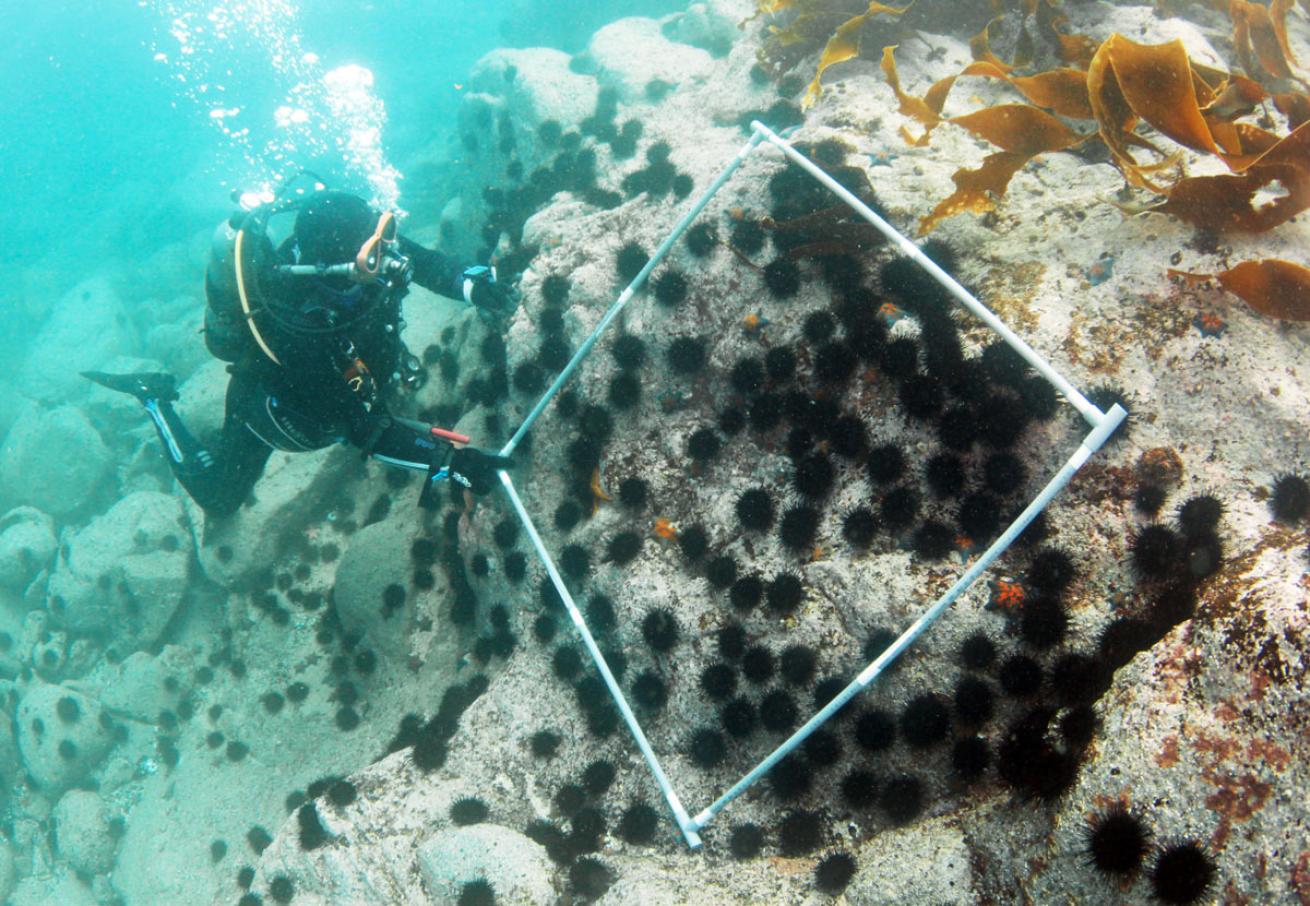
Kaori FujiiA diver gathers scientific data on ocean desertification.
Q: Why did you continue the volunteer dive program after the tsunami cleanup had ended?
A: Many people are not aware of the impacts of the Great East Japan Earthquake. Even after 10 years, the revitalization activities are still ongoing, and it is far from completely overcome. Under-water sites that have been cleaned up are still prone to get debris every time a storm comes. Ropes and other debris on the seabed are stirred up, and the nets used in local fishing activities such as oyster farms are disrupted.
As I dive continuously, there will always be a new issue, such as sea temperature rise, waiting to be solved, which is why my work in ocean conservation will also continue. Another thing that kept me going is the unique relationship that I have built with the fishermen and the local community—together we have built trust and work together toward a better future.
Q: What can divers in Japan do to help with your efforts or get involved with marine conservation?
A: Sanriku Volunteer Divers offers all the ocean conservation activities I mentioned earlier, to all divers, of all levels. Those who are interested are encouraged to visit and have a hands-on experience.My advice to everyone else is that while it is great to enjoy diving in all parts of the world, please never forget to prioritize driving locally. Look closer at what is right in front of you, and you will witness not only the beauty and magic of it, but also the challenges that lie beneath, and that is your call for action.
Each Sea Hero featured in Scuba Diving receives a Seiko SRPD43 watch valued at $525. For our January issue, judges select a Sea Hero of the Year, who receives a $5,000 cash award from Seiko to further their work. Nominate a sea hero at scubadiving.com/seaheroes.

